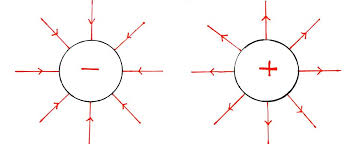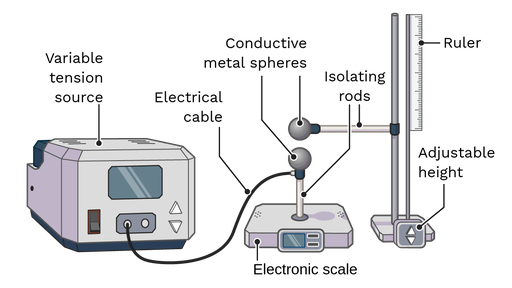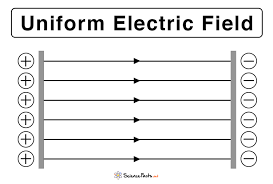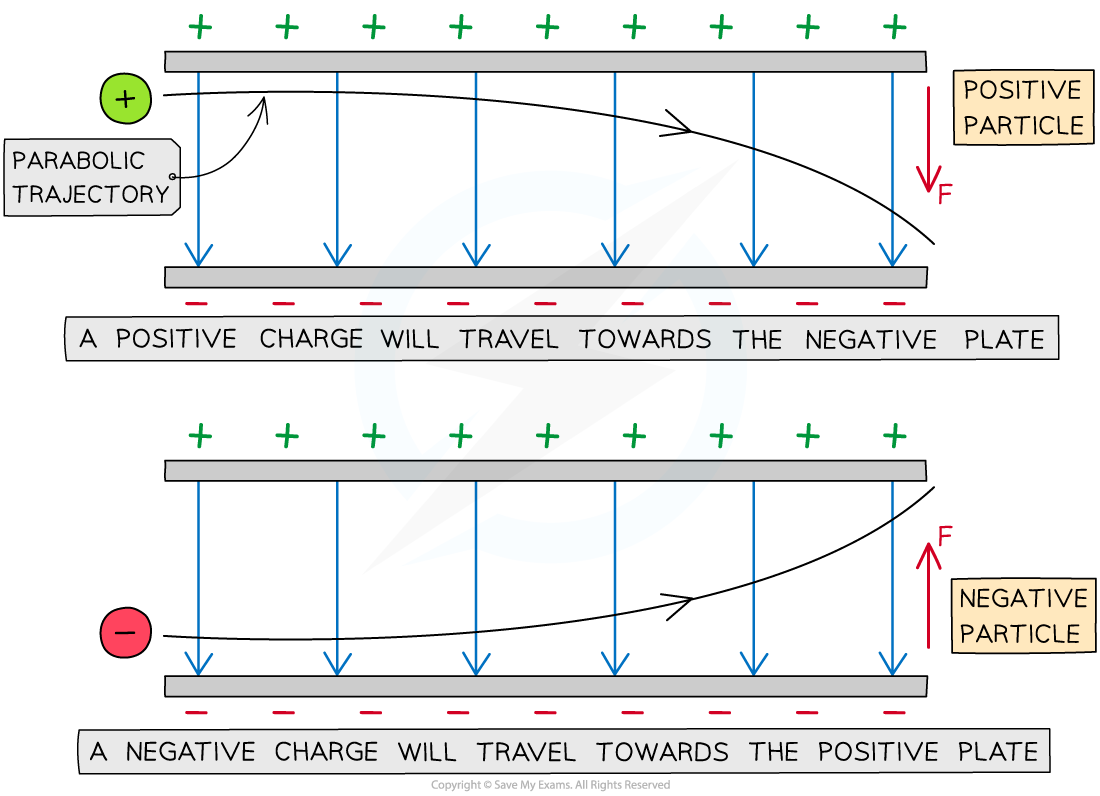Electric Fields
1/32
There's no tags or description
Looks like no tags are added yet.
Name | Mastery | Learn | Test | Matching | Spaced |
|---|
No study sessions yet.
33 Terms
What is meant by a field in physics?
A field is a region in which an object will experience a force at a distance
What is an electric field?
A region where a charged particle will experience a force at a distance
Explain how an electric field can be detected using a strip of gold foil attached to an insulator?
Attach a thin strip of gold foil to the bottom of an insulator
The gold foil is given a constant positive charge by momentarily touching it to the charged ball, the charged foil experiences an electrostatic force when close to the ball
The force is smaller, the further away the foil is to the charged ball → electric field
Define electric field strength?
The force experienced per unit positive charge at that point (a point in space)
State the equation for electric field strength?
What is its unit and its SI unit?
E (Electric field strength) = F (Force/N)/ Q (Charge)
E unit= NC^-1
SI unit= kgmA^-1s^-3
Is electric field strength a vector or scalar quantity?
Vector Quantity, as it has a magnitude and a direction, the direction is where a positive charge would move if it were placed at that point
What are the electric field lines used for?
To map out electric field patterns, and help deduce the nature of the electric field created by individual charges
State 4 rules for drawing electric field lines?
The arrow on an electric field shows the direction of the field (away from positive charge and towards negative charge)
Electric field lines are always at right angles to the surface of the conductor
Equally spaced, parallel electric field lines represent a uniform field
Closer the electric field lines represent a greater electric field strength
How can a uniformly charged sphere be modelled?

Define Coulomb’s law in words?
Any 2 point charges exert an electrostatic force on each other that is directly proportional to the product of their charges and inversely proportional to the square distance between them
F is directly proportional to Qq
F is directly proportional to 1/r²
State the equation for Coloumb’s law?
F=Qq/4πϵ0r²
Force= Charge at one point (1) X Charge at one point (2) / 4 X π X ϵ0 X distance²
Draw and label the apparatus that can be used to investigate Coulomb’s law?
The balls can be charged positively by touching each momentarily to the positive electrode of a high-tension supply
Lowering one of the charged spheres down towards the other will produce a larger reading on the balance

State the equation for the electric field strength at distance, r from the centre of a point charge?
E=F/Q therefore
F= Qq/4πϵ0r²q → q’s cancel →E= Q/4πϵ0r²
In what situations does Coulomb’s law apply?
To any point charges
What produces a uniform electric field?
Include a sketch to show the electric field lines for your chosen system
2 oppositely charged parallel plates produce a uniform electric field in the region between the plates

For oppositely charged parallel plates, which 2 variables determine the electric field strength?
Potential difference across the plates, V
Separation between the plates, d
State the equation for the electric field strength of 2 oppositely charged parallel plates?
E (Electric Field Strength) = V (p.d) / d (separation between the plates)
What is the derivation for the equation E (Electric Field Strength) = V (p.d) / d (separation between the plates)?
F= EQ
W=Fd→ W= Eq x d
W= VQ
VQ= EQ x d
E= V/d
State 2 SI units for electric field strength?
NC^-1 or 1Vm^-1
Explain why an electron placed between 2 oppositely charged parallel plates will experience a constant acceleration towards the +ve plate?
Being negatively charged, an electron between the plates will travel away from the negative plate towards the positive plate, in the opposite direction of the electric field, the electron experiences a constant electrostatic force because of the uniform electric field between the plates, so it has a constant acceleration
How can you calculate the force on a charged particle in a uniform field?
Force on the electron or charged particle is given by F= EQ →
F= Ee (elementary charge)
Work done on the electron= Vq= Ve (e= elementary charge)
How can you calculate the acceleration of a charged particle in a uniform field?
a=F/m acceleration= Force of the electron or charged particle/ mass of the electron or charged particle
Because a charged particle in a uniform field experiences a constant acceleration, suvat equations can be applied. What are the 4 equations?
V= u + at
s= ut + ½ at²
s=v+u/2 X t
V²= u² +2as
Sketch a path of a positively charged particle entering a uniform field at a right angle?
What word is used to describe this path?
Parabolic path

Explain why 2 positive charges held close to each other store electrical potential energy?
How could the stored energy be released in the situation above?
Charged particles store energy, the charges repel each other so you have to do work to decrease the separation between the charges and move them closer to each other
Work done stored as electric potential energy
Separating the charged particles and letting them repel would release the stored energy
Sketch a force-separation graph for 2 point charges?
What does the Area under the graph represent?
F is directly proportional to 1/r²
Work done


What does the total area under the graph represent (from infinity to a separation, r)?
The total work done to bring the particles from infinity to a separation, r
State the equation for electric potential energy of 2 point charges?
E= Qq/4πϵ0r
What does it mean if electric potential energy has a negative value?
One of the particles has a negative charge
Define electric potential?
Work done per unit charge in bringing a positive charge from infinity to that point
What are the units of electric potential?
JC^-1 or Volts (V)
State the equation for the electric potential of a point charge?
V= E/q and Qq/4πϵ0r
V= Q/4πϵ0r
Define electric potential difference?
Work done per unit charge between 2 points around the particle of charge, Q